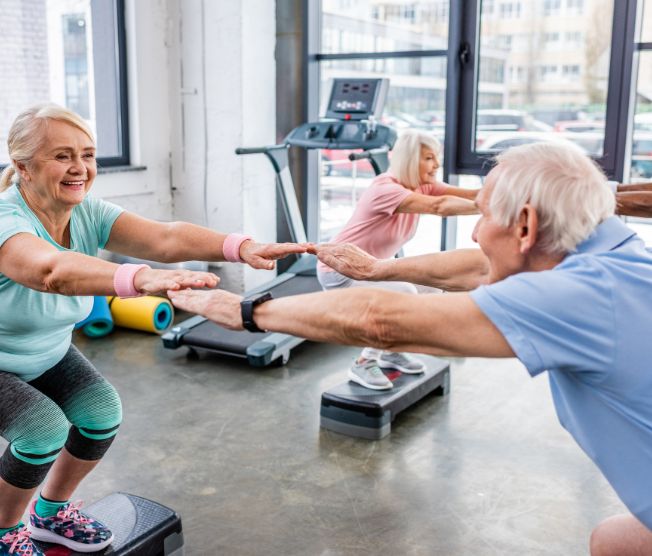 Remaining active is essential to support your muscles, bones and joints. Exercise can also lead to greater cognitive health and social engagement. Yet due to age and health-related changes, not every form of exercise delivers the same benefits for seniors. As you adjust your fitness routine with age, keep the following in mind.
Remaining active is essential to support your muscles, bones and joints. Exercise can also lead to greater cognitive health and social engagement. Yet due to age and health-related changes, not every form of exercise delivers the same benefits for seniors. As you adjust your fitness routine with age, keep the following in mind.
Benefits of Exercise for Seniors
In early adulthood, the goal of exercise might have been to lose weight or grow muscular endurance. For seniors, physical activity has other benefits, including:
- Greater independence to complete activities of daily living and for overall mobility.
- Better balance to reduce fall risks.
- Improved energy from the release of serotonin, a chemical that improves mood.
- Fighting off certain chronic diseases, including diabetes and heart disease.
- Maintaining relationships or connecting with new people in social settings.
Recommended Exercises for Seniors
In general, exercise that places strain on the heart, requires heavy lifting or involves high temperatures can increase the risk for injuries and other health concerns among seniors.
Low to medium-impact exercises that improve strength, coordination and balance are often best for older adults:
- Walking: Adults over age 60 should aim for at least 6,000 to 8,000 steps per day. Walking is an easy way to get moving that supports your muscles, bones, balance and coordination. It can also help manage chronic pain and lowers the risk of disease.
- Water Aerobics: Aquatics provide natural resistance and can ease joint stiffness, a combination that helps improve strength, balance and flexibility without weights.
- Yoga: With the exception of hot yoga, this practice is great for muscle, joint and bone health, as well as flexibility.
- Pilates: Similar to yoga, Pilates is a lower-impact workout that strengthens your core while focusing on balance, alignment and concentration.
- Resistance Bands: These elastic bands are easier on the joints and create resistance without lifting heavy weights.
- Bodyweight Exercises: Strength training workouts engage all parts of the body, without placing additional strain on the joints. Ideal moves for seniors include squats, which target the lower body, and wall pushups, which focus on the arms and core.
- Free Weights: Lifting a lighter set of dumbbells can enhance metabolism and support bone health. Popular exercises include bent over rows, front raises and bicep curls. Light weights can also add more resistance to squats when working your lower body.
Always consult with a doctor before starting a new exercise routine. Depending on your age, medical history and current fitness level, certain workouts may not be recommended.
Whether you’re looking to improve overall health or exercise is part of your short-term rehabilitation plan, work with the medical team at West Hartford Health & Rehabilitation Center to guide your progress.

